The U.S. Department of Energy (DOE) has published early results from its ongoing national transmission planning study.
To reach 100% clean electricity by 2035, the geographic distribution of cost-optimal transmission additions is “robust across many sensitivities,” DOE reported in a slide deck for a webinar, with the highest density of transmission additions connecting the “wind belt” in the central U.S. with eastern demand centers, as shown in the nearby image.
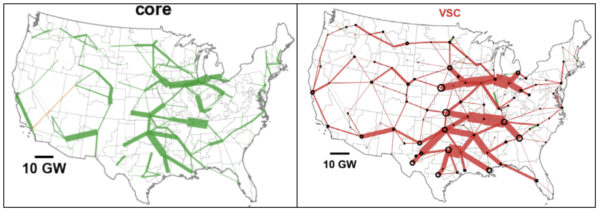
Both maps in the image reflect a scenario with high electricity demand that reaches 100% clean electricity by 2035. The map with green lines shows optimal additions of alternating current (AC) transmission without connecting the nation’s three interconnections (Eastern, Western, and ERCOT in Texas). The map with red lines reflects the optimal transmission buildout with both AC and high-voltage direct current (HVDC) transmission, when allowing new transmission across the interconnections.
Solar and wind power would provide 79% of total generation in 2035, including 134 GW of distributed solar, under the core modeling assumptions for a grid that reaches 100% clean electricity by 2035 with high electricity demand. The remaining generation would be provided by a mix of sources, as shown by the bars at the left side of the nearby image. High electric demand by 2035 is modeled as being on the path to reaching net-zero emissions economy-wide by 2050.
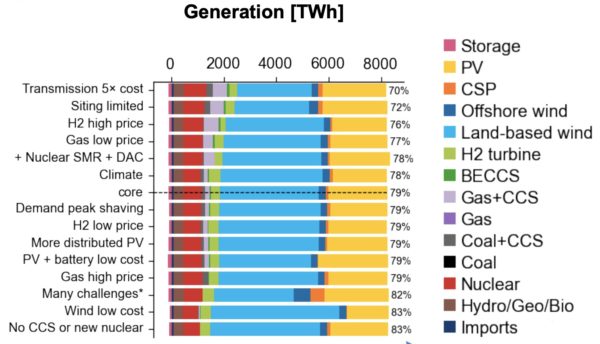
Characterizing the results to date as “valuable early insights,” Carl Mas, a senior advisor at DOE’s Grid Deployment Office, said on the webinar that “the numerical results will change over time, in part based on future detailed modeling” through next year.
The core modeling assumptions use “moderate” projected future costs of solar, wind and storage capacity, drawn from the “moderate” scenario in the Annual Technology Baseline (ATB) prepared by the National Renewable Energy Laboratory. In one sensitivity analysis, the study uses costs for solar and storage from ATB’s “advanced technology,” or lower-cost scenario, while another sensitivity analysis uses ATB’s lower-cost scenario for wind capacity costs. A “more distributed PV” scenario models 190 GW of that resource by 2035.
DOE did not disclose its source for cost projections for new technologies shown in the image above, including carbon capture and storage (CCS) based on direct air capture (DAC), and small modular nuclear reactors (SMR).
After the study team identifies “the most compelling scenarios,” the team will select a subset of scenarios to conduct more detailed analysis, said Hamody Hindi, a transmission planning engineer with DOE, on the webinar.
Through that process, Hindi said, “we’re trying to identify those high value [transmission] expansion options that perform well in most, if not all, the future scenarios that we’re analyzing.” The results, he said, would be “a starting point for a conversation; we want to work with regional planners to take those identified options to the next level of development, to ultimately try to get steel in the ground where appropriate, or to upgrade existing corridors using appropriate technology.”
Even under current policy, Hindi said additional transmission capacity equal to 20% to 70% of current capacity would be needed.
DOE is conducting a separate Atlantic offshore wind transmission study, and hopes to perform additional offshore wind transmission studies for other regions, said Maria Robinson, director of DOE’s Grid Deployment Office, on the webinar.
The National Transmission Planning Study is being conducted jointly by the National Renewable Energy Laboratory and the Pacific Northwest National Laboratory, with support and direction from the Department of Energy’s Grid Deployment Office.
DOE has posted online the webinar and slide deck, describing the national transmission planning study and its early results.
DOE also has a web page for a national transmission needs study, which suggests that the study will overlap with the national transmission planning study.
This content is protected by copyright and may not be reused. If you want to cooperate with us and would like to reuse some of our content, please contact: editors@pv-magazine.com.
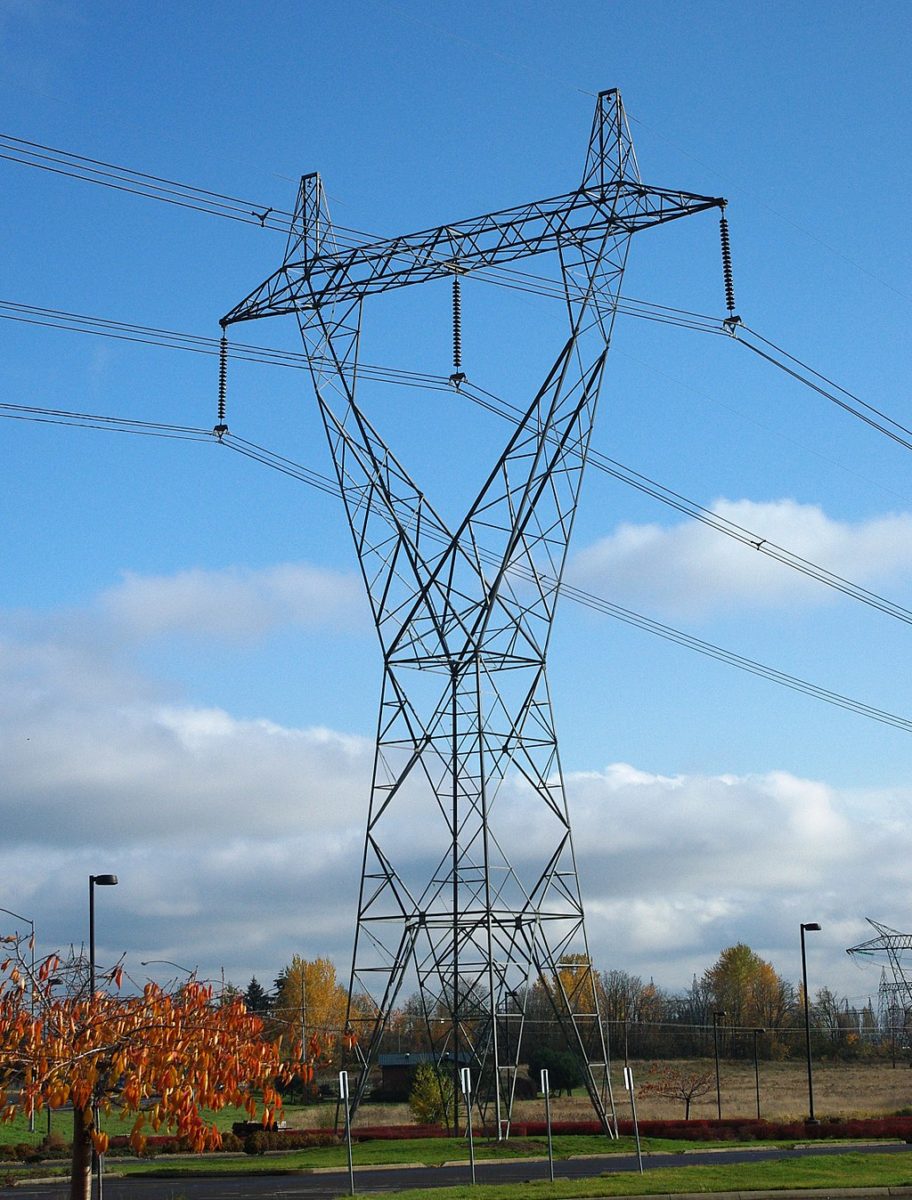
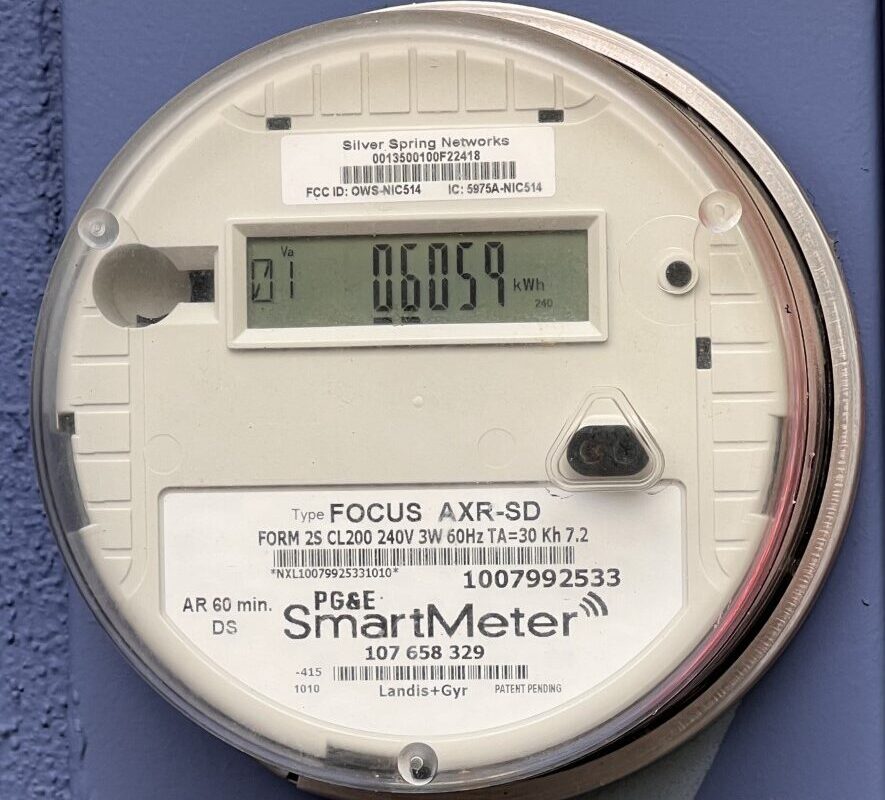


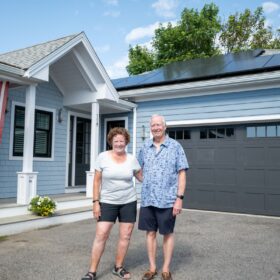



What if everybody gets rooftop solar and the only transmission needed is at night from nuclear, hydro and fossil fuel powered plants when demand is low? Where would all this long-distance transmission put the power when nobody is buying it because they are generating their own cheap electrical power at home during daylight hours? All this extra infrastructure will add costs that will raise rates to customers forcing them off the grid with off-grid rooftop solar and batteries. Look at California and its high electrical rates and the high demand for rooftop solar because of their 49 cent per kilo watt hour Summertime peak electrical rates and over 30 cents per kilo watt hour regular rates. Rooftop solar pro-rates at 10 cents to 12 cents per kilo watt hour over the life of the system, for most California homes, so the price difference between utility power and home-produced power is a real incentive to generate power from a rooftop or back yard.